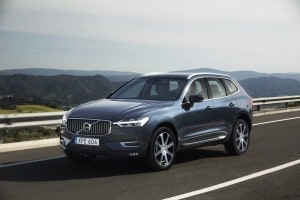Mobile Visitors: Serious Shoppers or Just Playing on their Phones?

Mobile device use is a growth hotspot these days and users are visiting car websites in greater numbers. On Edmunds.com, mobile site users and traffic have more than doubled since 2012. Today, mobile accounts for about 35 percent of the site's unique visitors. More than half of these mobile visitors are Millennials, and that share is growing as well. In a world in which mobile device use is swiftly reducing the use of all other forms of major media and in which attracting Millennials is a key goal of a wide range of advertisers and businesses, it would appear that mobile site growth should be a real priority for auto industry sites. But just how much of a priority depends on the answer to a very important question: Are visitors to these sites serious shoppers on track to purchase a new vehicle — or are they just playing around on their phones?
In a recent study, Edmunds found that mobile site users do indeed show serious car shopper traits. More specifically, they engage in five relevant behaviors:
1. They shop.
2. They view inventory.
3. They click on ads.
4. They are submitting leads in increasing numbers.
5. Their pageviews rival those of wired visitors.
1. Shopping
The most important thing to know about mobile visitors is that they are shopping. Some 79 percent of mobile users shop (i.e., view at least one specific vehicle) during their time on Edmunds. This statistic compares favorably to the already strong shopping rates of wired site visitors, of whom 65 percent view shopping pages. Mobile site visitors show a stronger preference for used vehicles than wired site visitors (53 percent versus 38 percent). On both sites, nearly all visitors who shop for used cars shop only for used cars.
As on wired, the most active visitors on mobile make up a fairly small group that shops for both new and used vehicles. These visitors generate 22 percent of Edmunds mobile traffic, but view 4 times as many pages as their counterparts who shop new or used alone.

2. Viewing Inventory
Mobile visitors who shop go beyond merely considering vehicles. They actively engage in key lower funnel shopping activities. They are particularly inclined to view the inventory of actual vehicles for sale nearby, with viewing rates at least 30 percent higher than their wired counterparts. For shoppers considering both new and used vehicles, the share that views new inventory on mobile is 53 percent higher. For shoppers considering only used vehicles, mobile's inventory viewing share is 40 percent higher.
In addition, mobile visitors viewing inventory generally view about 9 percent more inventory pages on average per person than wired site inventory viewers. The one exception is inventory viewers who shop only used vehicles. Although these visitors constitute a smaller share of used-only shoppers on the wired site, they are more active than their mobile counterparts.

3. Clicking on Ads
Another key shopping behavior is a visitor's engagement with ads. Edmunds found that mobile users are at least 2.5 times more likely to click on ads than wired site visitors. This result holds for both retention and conquest ad campaigns. What's more, mobile ad engagement has tripled compared to last year.
Even better, initial analysis of post-Edmunds activity found that these mobile clickers continue to show serious shopping interest on the OEM or dealer sites where their ad clicks redirect them. These users perform key shopping activities on these sites, indicating that higher mobile click-through rates (“CTRs”) are not just due to accidental clicks or to mistaking ads for Edmunds content.

4. Lead Submission
Another serious mobile shopping behavior is the rapid growth in mobile lead submissions. Mobile traffic increases and recent optimizations to the traditional lead form have each helped. So has lead submission through new mediums, such as text or conversations enabled with a “click-to-call” button. Initial results show that close rates on these non-traditional leads match or exceed traditional lead close rates. This trend suggests that even though mobile lead submission rates have lagged wired rates historically, it is not because mobile shoppers are less serious. More likely, lower rates indicate mobile has not been fully optimized as a way to connect shoppers and dealers.


5. Page Views
Mobile users stack up comparably to wired users in their content consumption. Even though mobile users spend less time on Edmunds, they view as many or more pages during that time, offering a similar range of opportunities to engage them with advertising or other content.

The Next Frontier
These five mobile behaviors indicate that mobile visitors to sites like Edmunds are serious car shoppers and, as such, valuable to OEMs and dealers. This makes a strong case for why car websites should invest in optimizing experiences for mobile visitors. As the mobile user base continues to grow, finding new and innovative ways to connect this valuable group with OEMs and dealers will be a critical priority in the new age of car shopping.
Lacey Plache is the Chief Economist for Edmunds.com. Follow @AutoEconomist on Twitter.





